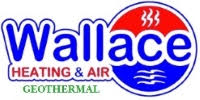When extreme cold hits, your furnace becomes one of the most critical components of your home. Proper maintenance not only ensures that your home stays warm but also prevents costly repairs or system failures. Here are some tips to keep your furnace running efficiently during severe winter weather:
1. Replace or Clean the Air Filter
A dirty air filter restricts airflow, making your furnace work harder to heat your home. Check the filter monthly and replace it if it looks dirty or clogged. Clean reusable filters according to the manufacturer’s instructions.
2. Inspect and Clean the Vents
Blocked or dirty vents can impede airflow, reducing efficiency. Ensure all vents are open and unobstructed by furniture or curtains. Regularly vacuum or wipe them down to remove dust and debris.
3. Test the Thermostat
Ensure your thermostat is functioning correctly by testing its settings. If it’s not maintaining the desired temperature, consider replacing the batteries or recalibrating it. A programmable or smart thermostat can also help optimize heating schedules and save energy.
4. Check the Pilot Light or Ignition System
If your furnace has a pilot light, it should burn steadily with a blue flame. If it’s yellow or flickering, it may indicate a problem with combustion. Consult a professional for adjustments. For modern furnaces with electronic ignition systems, ensure there’s no buildup of dust or debris.
5. Monitor the Furnace’s Exhaust Pipe
The exhaust pipe, typically located outside, must remain clear of snow, ice, or other obstructions to allow proper venting. A blocked exhaust pipe can lead to dangerous carbon monoxide buildup in your home.
6. Schedule Regular Maintenance
Have a licensed HVAC technician inspect and service your furnace annually, preferably before the cold season begins. Professional maintenance includes cleaning internal components, checking for wear and tear, and ensuring the system is running safely and efficiently.
7. Keep the Area Around the Furnace Clear
Maintain at least a three-foot clearance around your furnace to ensure proper airflow and reduce fire hazards. Avoid storing flammable items near the furnace.
8. Watch for Warning Signs
Listen for unusual noises like banging or rattling, and watch for frequent cycling on and off, uneven heating, or increased energy bills. These can be signs that your furnace needs immediate attention.
9. Use Space Heaters Cautiously
If you’re supplementing heat with space heaters, use them safely. Keep them away from flammable materials and never leave them unattended. Avoid overloading electrical circuits.
10. Prepare for Power Outages
Have a backup heating plan, such as a generator or fireplace, to keep your home warm if the power goes out. Ensure your furnace’s safety systems are operational to prevent damage during outages.
Taking proactive steps to maintain your furnace during extreme cold ensures a warm, safe, and energy-efficient home. Regular maintenance not only extends the life of your furnace but also provides peace of mind during the harshest winter days. Stay prepared and stay warm!

